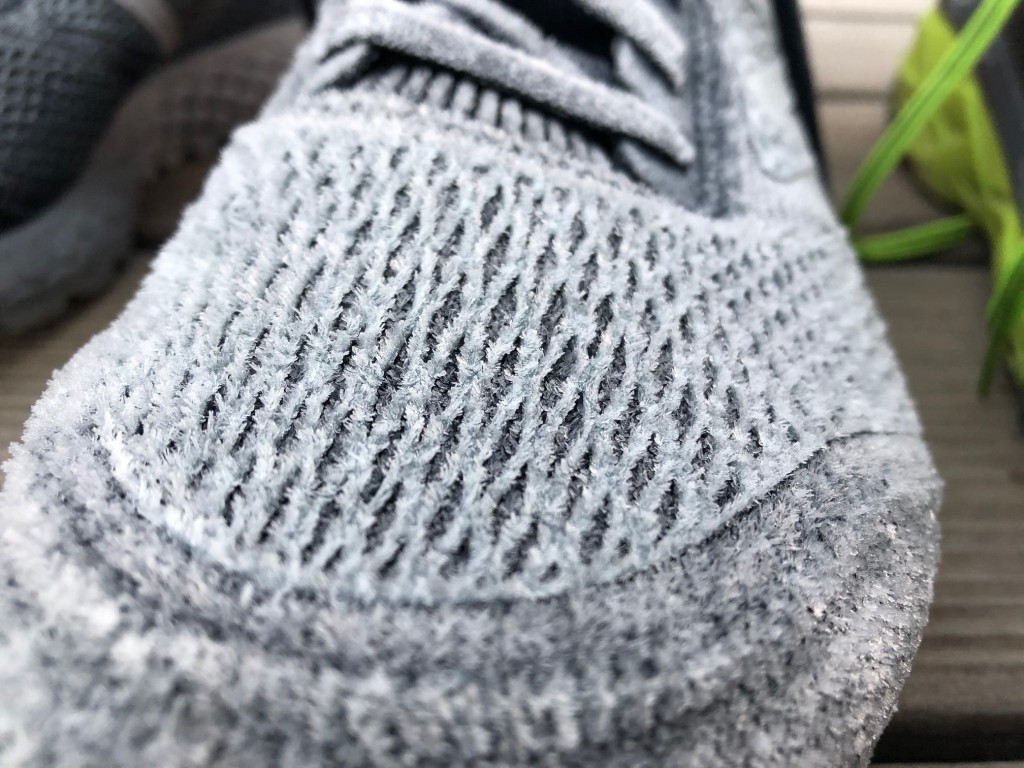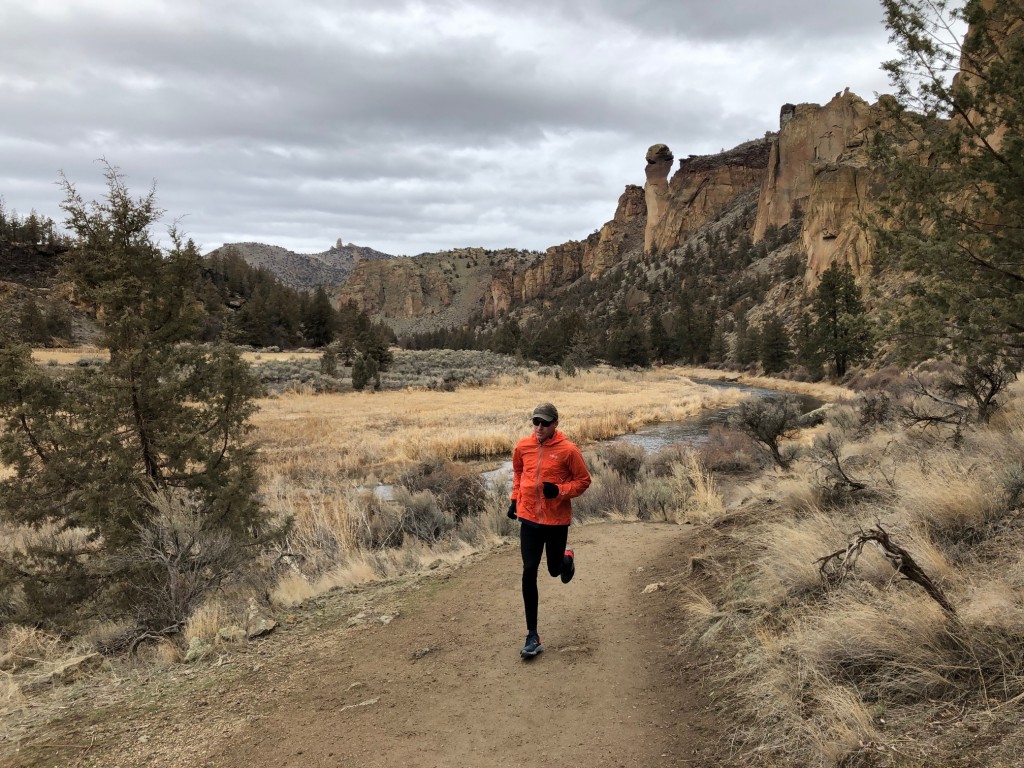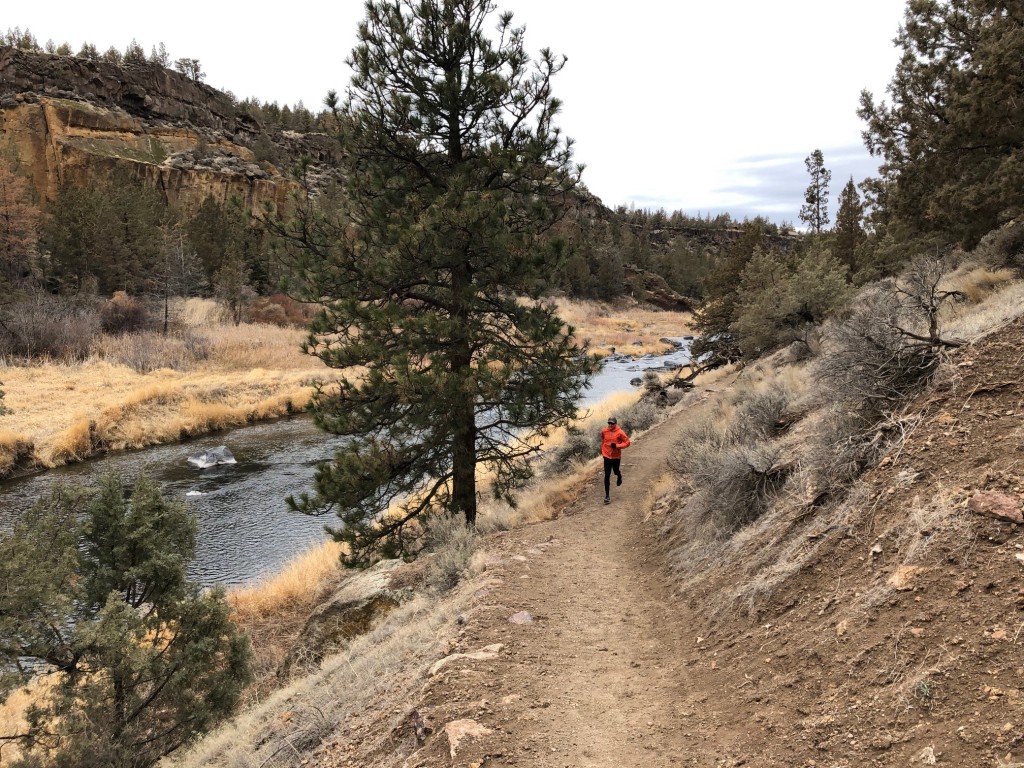New Balance Fresh Foam Gobi V3 Review
Our Verdict
Our Analysis and Test Results
We chose to test the Fresh Foam Gobi v3 as an alternative to the maximally cushioned Hokas that have become synonymous with this shoe design. Despite the appearance of a large EVA foam midsole from the outside, the 23mm/17mm of underfoot protection is actually less than average these days for a trail running shoe, and does not really compare to the 31mm/26mm stack height found in the Hoka Challenger ATR 5. That said, they do have the same idea in that they rely solely on foam cushioning underfoot to protect from obstacles along the trail, as well as absorb the repetitive impacts of running. The Gobi v3 feel vastly different from your average Hoka when running, offering a refreshing amount of trail feel that leaves you feeling connected to the surface you are running over, rather than cut off and removed from it, and so may provide a better alternative for those runners who value sensitivity more than absolute protection underfoot.
There are some significant changes to the latest version of this shoe, and so lovers of the Gobi v2 should not be surprised that the shoe feels quite a bit different. The outsole and midsole fresh foam remain unchanged, but the upper is totally different. Replacing the traditional design of the v2 is an integrated, gusseted tongue that connects to an elevated ankle cuff that surrounds the ankle and effectively keeps out debris. However, most of the comfy padding on the tongue, ankle, and heel is gone. The newer version weighs about half an ounce less per shoe, and now has a firmer toe bumper and protective TPU patterning covering the entire upper.
Performance Comparison
Foot Protection
Underfoot, the Gobi v3 is far more sensitive and less protective than you would expect for a shoe that includes its type of EVA foam in its name. There is no rock plate sandwiched into the foam, and while it does a nice job on gentle terrain from cushioning the impacts of repeated landings, it allows most of the objects that one lands upon to be felt by the sole of the foot, making it one of the more sensitive, and less protective, midsoles we tested. In that regard, it is not unlike the feeling of running in the Saucony Peregrine ISO.
The upper, however, has been improved immensely to offer more protection than the simple mesh of the previous version. It features a firm, toe-to-toe bumper in the front that does a nice job of taking a direct hit, and now includes a mesh patterned plastic overlay that covers the entire upper, enhancing durability. This is especially nice where it covers the forefoot crease and wear points. Lastly, the newly designed ankle cuff protects the foot by preventing small pieces of dirt and rocks to slip into the shoe.
Traction
The Hydrohesion rubber outsole on this shoe remains exactly the same as previous versions and does a good job gripping dry dirt, mud, and rock.
The sole is one single piece that enhances its durability and features a pattern of different sized pentagonal lugs spaced fairly closely together. These lugs are roughly 4mm deep, and while they are quite effective on your everyday trail, they do not provide the same sort of deep, aggressive traction for steep grass or dirt as is found on many of the most common trail running shoes these days, such as the Inov-8 Roclite G 290.
Stability
Stability tends to be a combination of how high and prone to rolling the underfoot midsole and outsole (the stack) is, as well as how well the shoe grips the foot to hold it firmly in place upon landing and take-off on uneven terrain. While the Gobi v3 rides relatively low to the ground, especially compared the Hoka Speedgoat 3, the recent changes in the upper have actually led to a less stable fit. The newest version has very little padding in the tongue, around the ankle, or in the heel, and in our experience, this leads to a sloppier fit and the ability for the foot to shift inside the shoe. In particular, we noticed our foot sliding forward a bit on the downhills, while the heel easily raised a bit running uphill. Therefore, this shoe is slightly less stable on uneven terrain than its competition.
Comfort
We are disappointed to say that this shoe is far less comfortable than the previous version, which was a major selling point, and does not live up to what we expect comfort wise from a New Balance shoe, as they are typically among the most comfortable you can buy. Of course, comfort is very subjective, but in this case our opinions are not even discussing the fit, but are sticking strictly to the design and its execution. In particular, the collar around the ankle bit into our Achilles tendon the moment we started wearing them, which really annoyed us. After a few runs we noticed this issue moderating somewhat, but frankly, most of the shoes we test these days feel delightful the moment we try them on. As mentioned, much of the padding in the upper is now gone, so our feet simply don't feel as comfortably cradled as we wish they were. One giant plus is that this shoe comes in either regular or wide versions, a trait not common in the trail running shoe market.
In our water bucket test, despite having less material and padding to absorb water, this shoe was still one of the most absorptive, and at the same time one of the least efficient at quickly shedding the water it took on. This would suggest that it would not be the perfect choice for running frequently in very wet conditions.
Weight
Our pair of men's size 11 shoes weighed in at a mere 19.5 ounces. This is a remarkable feat, and makes them one of the lightest pairs of shoes in this review. And if you compare them to the other very light offerings, such as the Hoka Evo Jawz or Scarpa Spin, these shoes have much better underfoot support and padding. If you want the most shoe for the least weight, this is surely the first option to check out.
Sensitivity
The Gobi v3 is a very sensitive shoe, especially for having a lot of EVA foam underfoot. Frankly, we think this offers the runner the best of both worlds — cushioning from repetitive impacts while allowing the runner to feel the texture of the trail. To test for this metric we intentionally picked out all the sharp and jagged rocks we could to run over, and while none of them hurt our feet, there is no doubt that we could feel what we were running over. This shoe remains one of the most sensitive.
Best Applications
This shoe is a good option for those who like to run on either trails or asphalt, or both, in the same shoe, in generally dry conditions. It is not an ideal pick for off-trail running due to the lower profile lugs, and isn't great in super wet weather because it absorbs a lot of water. It is better for those who appreciate sensitivity in their shoes over underfoot protection, but want to get a lot of miles out of a pair of shoes.
Value
Retailing for a mere $100, this is the most affordable trail running shoe in this review. Despite the fact it isn't one of our highest rated, we think it provides pretty good performance, and longevity, especially for the money, and presents a good value.
Conclusion
The New Balance Fresh Foam Gobi v3 updates the comfortable and sensitive previous version by sticking with the underfoot design but massively changing the upper. Despite the innovative collar that works to prevent debris from entering the shoe, we found this shoe to be less comfortable than the previous version, and a slight step down in terms of enjoyment and performance.















